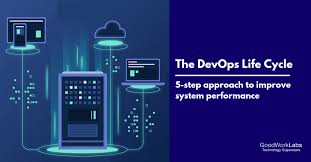Real-time messaging across the DevOps lifecycle

Source:-sdtimes.com
A modern messaging platform acts as your command center for software development, delivery, and operations. It’s the place where your teams meet to discuss ideas and issues, make decisions, access information, and manage workflows tied to your DevOps tools and systems.
Plan
Your messaging platform is the system of record for team conversations related to planning new products and features. From technologies to timeframes, teams collaborate on ideas, discuss approaches, and make decisions. Users can easily share project documents, like roadmaps, diagrams, or presentations. Persistent messaging histories and threaded conversations make the process open and transparent, so your team, partners, and stakeholders stay informed and aligned. Integration with planning tools like Jira help teams access and share information in Jira within a dedicated project workspace. If a voice conversation is needed, integration with video conference platforms like Zoom or WebEx, makes it easy to hop on and off a call, and jump straight back into the workflow on the team channel.
RELATED CONTENT:
Challenges to effective DevOps collaboration
The top reasons to adopt a modern messaging platform
What to look for in a messaging platform
Code
As developers write code, they naturally turn to each other for collaboration and support. Whether individuals are sitting in the same office or working remotely, the entire team can work together in a shared virtual workspace. Everyone can easily ask questions and solve problems in real time, discuss technical approaches, and review each other’s code. A robust messaging platform will offer language syntax support, enabling developers to paste a code snippet directly into a conversation and see it displayed with the correct formatting. Integration with development tools, such as GitLab, allow developers to create and submit code into a shared repository from within the team’s messaging channel.
Build
When it’s time to create a new software build, integrating your messaging platform with your build system can make the build process easy and transparent. Custom slash commands allow your team to trigger a build, view or download builds, and get signature information straight from the messaging platform’s UI. Plugins allow your team to access other automation tools, like Jenkins, to more easily interact with jobs and builds and view notifications from within the team’s workspace.
Test
The test process requires close collaboration as teams test new releases, identify issues, and fi x bugs. Your DevOps teams can create a powerful testing hub by using webhooks to integrate their favorite CI and bug tracking tools with your messaging platform. From the platform, they can then automatically trigger tests and post notifications, bug reports, or alerts from your testing and issue tracking tools to the right channels, keeping everyone updated in real time throughout the testing process.
Release
When a build is released, you want to ensure that the relevant teams are informed that the release was successful. Developers can then accelerate their delivery of new features and fixes, and ops engineers can be prepared to support the soft ware update. Your messaging platform is the real-time broadcaster of this information. Integration with third-party release packaging tools, such as Jenkins, into your release workstream can automatically notify the right people and promote transparency across teams.
Deploy
Following the code to its final destination on production, the DevOps team needs visibility into which servers received the code and any relevant stats, so they can troubleshoot any issues that may arise during deployment. Whether you deploy using Puppet, Kubernetes, AWS services, or another solution, your messaging platform can send out automated notifications into your deployment workstream, enabling everyone to easily track the success of the release into the wild.
Monitor
DevOps monitoring tools keep track of application health and performance on production. Your messaging platform can post real time and historic data from monitoring systems like Nagios, making it visible across your organization. This makes it easier for engineers and business stakeholders to gain insights and make decisions. It also provides a powerful hub for incident response. During an outage, a dedicated channel can alert the right individuals and bring teams together to resolve issues faster.